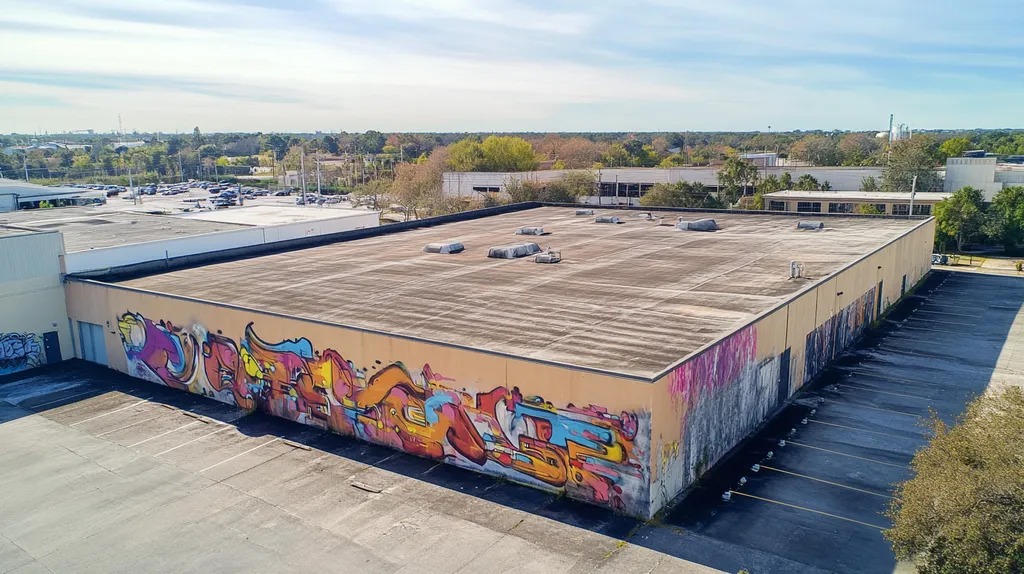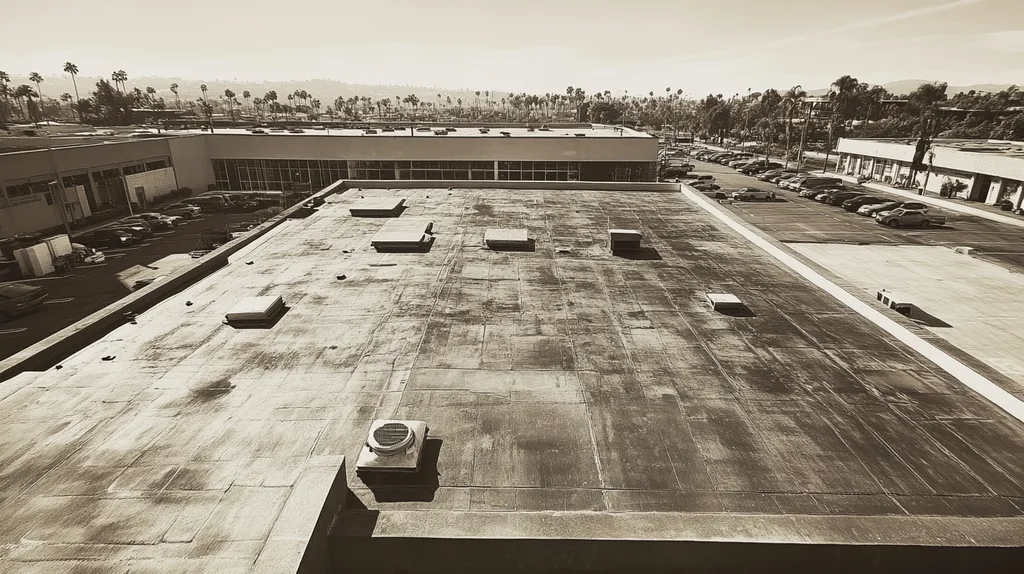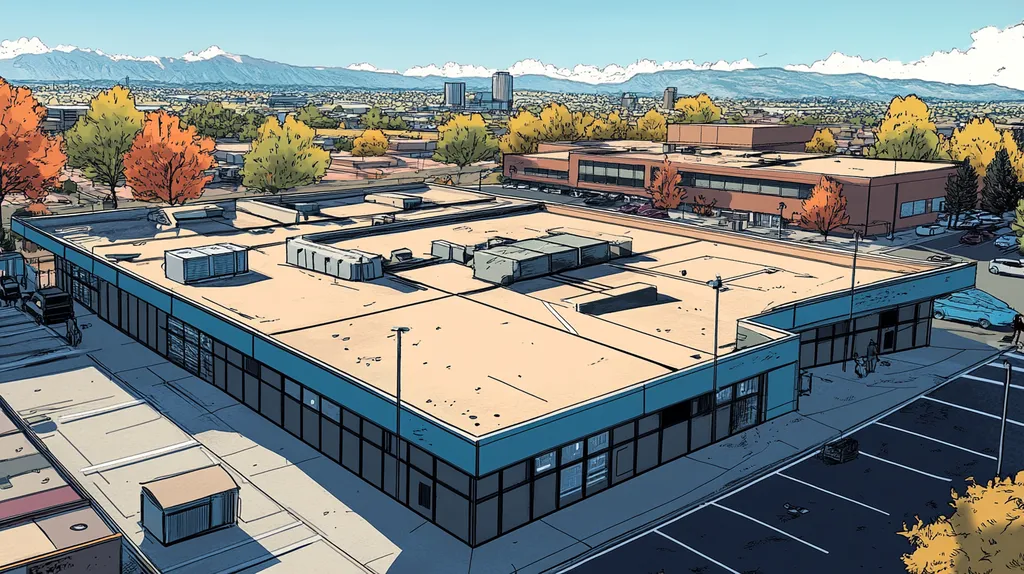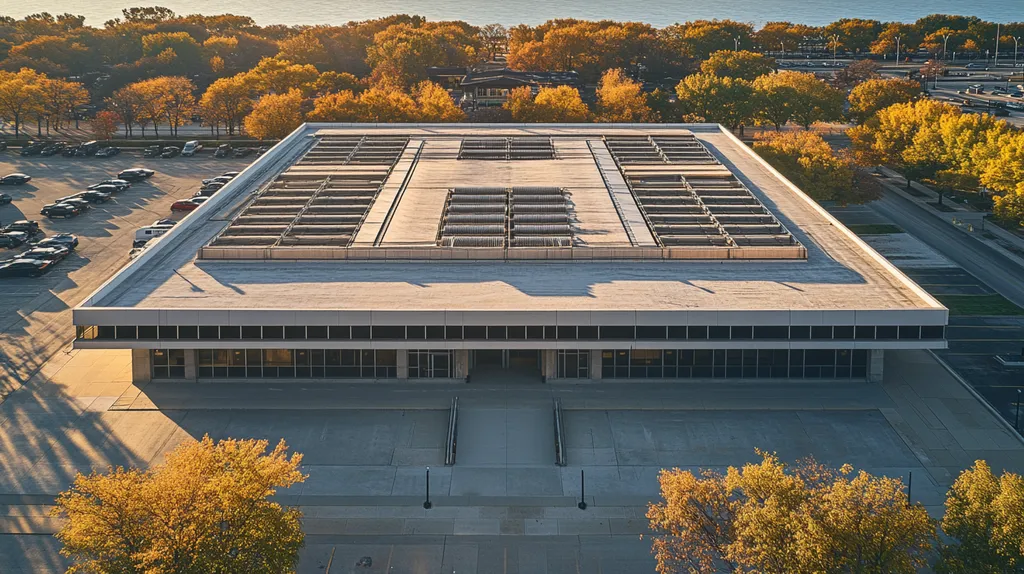In industrial roofing, documentation failures contribute to over $2.8 billion in annual project overruns and premature system failures across North America. Studies show that 65% of major roof issues stem directly from inadequate or missing documentation during critical project phases.
From material specifications to installation procedures, proper documentation serves as the foundation for every successful industrial roofing project. Yet many facility managers struggle to implement comprehensive documentation systems that protect their substantial roofing investments.
This guide examines the essential components of effective roofing documentation, providing property owners and facility managers with actionable strategies to ensure project success and maximize roof system longevity.
SECTION 1: FUNDAMENTAL CONCEPTS
Industrial roofing documentation forms the foundation of every successful roofing project, yet studies show that documentation gaps contribute to 40% of project delays and cost overruns. When critical information isn’t properly recorded and communicated, the consequences can range from material incompatibilities to structural failures. Without proper documentation, even minor oversights in material specifications or installation procedures can cascade into major problems affecting building operations and safety.
Understanding Roofing Documentation Basics
Effective documentation creates a clear roadmap for every phase of an industrial roofing project. This includes detailed specifications, material submittals, installation procedures, and quality control protocols that guide the project from initiation to completion.
Roof system and product literature submittals must clearly identify all specified products through highlighting or underlining. Bid documents should explicitly state which products require submittals, ensuring all stakeholders understand documentation requirements from the start. (source: CRCA/IIBEC/NRCA Guidelines)
Documentation serves as both a current project guide and historical record. This documentation trail proves invaluable for future maintenance, warranty claims, and building modifications.
Quality documentation also enables proper tracking of project milestones, material deliveries, and installation progress. This tracking helps maintain accountability and ensures all work meets specified requirements.
Importance of Clear Communication Protocols
Communication protocols establish structured information flow between property owners, contractors, architects, and facility managers. These protocols prevent critical details from being lost or misinterpreted during project execution.
Digital documentation systems have become essential tools for maintaining clear communication. These platforms enable real-time updates, automated notifications, and centralized access to project documents.
Regular documentation reviews ensure all parties remain aligned on project requirements and progress. These reviews identify potential issues before they impact project timelines or budgets.
Clear protocols also establish responsibility for document maintenance and updates. This accountability prevents information gaps that could compromise project quality or safety.
Industry Standards for Roofing Projects
Industry standards provide the framework for documentation requirements across all project phases. These standards ensure consistency in how information is recorded, shared, and maintained.
Documentation must comply with local building codes and manufacturer specifications. This compliance ensures proper installation and maintains warranty coverage for roofing systems.
Safety documentation requirements include fall protection plans, material handling procedures, and emergency response protocols. These documents protect workers and property while meeting OSHA requirements.
Environmental documentation tracks material disposal, recycling efforts, and compliance with local regulations. This documentation protects property owners from potential liability and demonstrates environmental responsibility.
SECTION 2: SYSTEM COMPONENTS
Industrial roofing systems represent significant capital investments, with component failures potentially costing facilities millions in repairs and lost productivity. Studies show that 65% of premature roof failures stem from poor component selection or integration. Understanding and properly documenting system components is crucial, as even minor oversights in material specifications or structural requirements can cascade into major operational disruptions.
Overview of Common Roofing Materials
Material selection dramatically impacts both initial costs and long-term performance of industrial roofs. TPO, EPDM, and modified bitumen systems each offer distinct advantages, with service lives varying from 20 to 40 years depending on installation quality and maintenance.
Environmental factors like UV exposure, chemical exposure, and temperature fluctuations must guide material choices. For instance, EPDM excels in extreme temperature environments, while TPO offers superior resistance to chemical exposure.
Project-specific conditions, including deck repairs and replacements, must be thoroughly documented before bid submissions to ensure accurate cost estimation. (source: CRCA/IIBEC/NRCA Guidelines)
Material compatibility documentation prevents costly failures, particularly at system transitions and penetrations. This documentation should detail adhesive requirements, overlap specifications, and fastening patterns.
Role of Structural Elements in Roof Design
Structural integrity depends on precise load calculations and proper component sizing. Dead loads, live loads, and equipment weights must be thoroughly documented to prevent deflection or failure.
Deck type and condition significantly influence system performance. Steel, concrete, and wood decks each require specific preparation and attachment methods that must be clearly specified.
Drainage design calculations must account for local rainfall intensity and roof geometry. Proper slope and drainage pathways prevent ponding water, which can compromise structural integrity.
Seismic and wind uplift requirements demand particular attention in structural documentation. These specifications ensure the roof system meets local building codes and insurance requirements.
Mechanical and Electrical System Integration
Rooftop equipment placement requires careful coordination between different trades. Documentation must detail equipment locations, support systems, and maintenance access requirements.
Penetration details for mechanical and electrical systems need explicit documentation. This includes specifications for pitch pockets, conduit supports, and weatherproofing methods.
Lightning protection systems and electrical conduit runs must be planned to minimize roof penetrations. Documentation should include grounding requirements and attachment methods that maintain roof integrity.
Equipment replacement and maintenance protocols require clear documentation. This ensures future work can be performed without compromising the roofing system’s integrity.
SECTION 3: IMPLEMENTATION METHODS
Implementation methods form the backbone of successful industrial roofing projects, with studies showing that 73% of project failures stem from poor execution rather than material defects. Careful attention to material selection, structural requirements, and system integration can mean the difference between a roof that lasts decades and one that fails prematurely. Understanding and documenting these critical elements helps prevent costly mistakes and ensures optimal performance throughout the roof’s lifespan.
Overview of Common Roofing Materials
The selection of appropriate roofing materials requires careful consideration of performance characteristics, environmental conditions, and building requirements. Each material choice carries specific implications for installation procedures, maintenance requirements, and long-term durability.
Single-ply membranes like TPO and PVC offer excellent UV resistance and energy efficiency, while EPDM provides superior durability in extreme temperature conditions. The specific application requirements for each material must be documented to ensure proper installation and optimal performance.
Material compatibility presents a critical concern, particularly at system transitions and penetrations. Clear documentation must specify appropriate adhesives, fastening patterns, and overlap requirements to prevent system failures.
Roofing project documentation must follow industry guidelines for material submittals, testing certificates, and quality control protocols. This comprehensive documentation ensures compliance with manufacturer specifications and warranty requirements. (source: CRCA/IIBEC/NRCA Guidelines)
Role of Structural Elements in Roof Design
Structural considerations directly impact roof system performance and longevity. Load calculations must account for dead loads, live loads, and equipment weights to prevent structural failures and ensure safety.
Deck preparation requirements vary significantly based on the substrate material. Steel, concrete, and wood decks each demand specific attachment methods and surface treatments that must be clearly documented.
Proper slope and drainage design prevents water accumulation that can compromise structural integrity. Documentation must include detailed drainage calculations and pathway specifications.
Wind uplift and seismic requirements demand particular attention in structural documentation. These specifications ensure the roof system meets local building codes and insurance requirements while maintaining long-term stability.
Mechanical and Electrical System Integration
Successful integration of mechanical and electrical systems requires careful coordination between multiple trades. Documentation must detail equipment locations, support systems, and maintenance access requirements to prevent future conflicts.
Penetration details for mechanical and electrical systems need explicit documentation. This includes specifications for pitch pockets, conduit supports, and weatherproofing methods to maintain system integrity.
Lightning protection systems and electrical conduit placement must minimize roof penetrations. Documentation should include grounding requirements and attachment methods that preserve waterproofing integrity.
Future equipment replacement and maintenance protocols require clear documentation. This ensures work can be performed without compromising the roofing system while maintaining operational efficiency.
SECTION 4: MAINTENANCE REQUIREMENTS
Effective maintenance can extend an industrial roof’s lifespan by 25-40% while preventing catastrophic failures that can shut down operations. Studies show that 85% of premature roof failures stem from inadequate maintenance practices, leading to billions in preventable repair costs annually. Understanding and implementing proper maintenance protocols protects not only the roof system but also the valuable assets and operations beneath it.
Preventive Maintenance Strategies for Roofs
Regular preventive maintenance directly impacts both short-term performance and long-term durability of industrial roofing systems. Scheduled cleaning of drainage systems, debris removal, and membrane inspections can prevent minor issues from escalating into major failures.
Strategic timing of maintenance activities maximizes effectiveness while minimizing disruption to facility operations. Spring inspections identify winter damage, while fall maintenance ensures systems are prepared for severe weather.
Documentation of maintenance activities creates a valuable historical record for tracking system performance. This documentation proves essential for warranty compliance and planning future maintenance budgets.
Regular inspections and maintenance help resist damage from severe weather events, including thunderstorms, hail, and high winds. Proper maintenance protocols significantly reduce the risk of catastrophic failures during extreme weather conditions. (source: Insurance Institute for Business & Home Safety)
Regular Inspections and Monitoring Techniques
Modern inspection techniques combine visual assessments with advanced technology to provide comprehensive system evaluation. Infrared scanning can detect hidden moisture while drone photography captures detailed imagery of hard-to-reach areas.
Key inspection points include membrane seams, flashings, penetrations, and drainage systems. These vulnerable areas require particular attention as they represent common failure points in industrial roofing.
Digital monitoring systems provide real-time alerts for potential issues like ponding water or excessive loads. These early warning systems enable rapid response before problems escalate.
Systematic documentation of inspection findings helps identify patterns and predict potential failures. This data-driven approach enables more efficient allocation of maintenance resources.
Addressing Common Maintenance Challenges
Access restrictions often complicate maintenance efforts on industrial roofs. Establishing safe access protocols and maintaining proper safety equipment helps overcome these challenges while protecting maintenance personnel.
Budget constraints frequently force difficult decisions about maintenance priorities. Developing clear criteria for evaluating repair urgency helps optimize limited resources.
Weather-related challenges require flexible scheduling and rapid response capabilities. Maintaining relationships with qualified contractors ensures quick access to emergency services when needed.
Staff turnover can disrupt maintenance continuity and knowledge transfer. Detailed documentation and standardized procedures help maintain consistency despite personnel changes.
SECTION 5: PERFORMANCE METRICS
Industrial roofing performance metrics directly impact facility operations and asset value, with studies showing inadequate tracking leads to 40% higher lifecycle costs. Modern roofing systems represent investments often exceeding $1 million for large facilities, making accurate performance measurement critical. Without proper metrics, minor issues can escalate into catastrophic failures that threaten operations and worker safety.
Key Performance Indicators for Roof Reliability
Effective performance tracking requires monitoring specific indicators that predict system reliability. These include membrane integrity scores, drainage efficiency ratings, and thermal resistance values that signal potential failure points.
Regular moisture surveys using infrared technology can detect subsurface issues before visible damage occurs. This data helps facility managers prioritize repairs and allocate maintenance resources effectively.
Load capacity monitoring ensures structural integrity remains within design parameters. Regular assessment of dead loads, live loads, and equipment weights prevents overstressing that could compromise the entire system.
Tracking repair frequency and types reveals patterns that help predict future maintenance needs. This data-driven approach enables proactive interventions that extend system lifespan while reducing costs.
Assessing Energy Efficiency and Sustainability
Energy performance metrics directly impact operational costs, with efficient systems reducing HVAC loads by up to 30%. Regular thermal imaging and heat flow analysis identify areas of energy loss requiring attention.
Solar reflectance and thermal emittance measurements determine cooling efficiency. These values often degrade over time, making ongoing assessment crucial for maintaining optimal performance.
Storm water management metrics ensure environmental compliance while preventing membrane damage. Proper drainage assessment protects both the roof system and surrounding environment.
Sustainability scoring considers material lifecycle impacts and recycling potential. These metrics help facilities meet environmental goals while optimizing replacement timing.
Evaluating Roof Durability and Lifespan
Durability metrics focus on resistance to environmental stressors and mechanical damage. Regular testing of seam strength, membrane thickness, and surface degradation predicts remaining service life.
Weather resistance indicators measure system performance under extreme conditions. Understanding these metrics helps facilities prepare for severe weather events while maintaining operational continuity. (source: Insurance Institute for Business & Home Safety)
Impact resistance testing ensures protection against hail and falling debris. These measurements help maintain insurance compliance while preventing catastrophic failures.
Chemical resistance monitoring protects against industrial exposures and environmental pollutants. Regular assessment prevents premature degradation in facilities with harsh operating environments.
SECTION 6: OPTIMIZATION STRATEGIES
Industrial roofing optimization has become increasingly critical as facilities face rising energy costs and maintenance challenges. Studies show that optimized roof systems can reduce energy costs by up to 30% while extending service life by 10-15 years. Yet many facilities continue operating with inefficient systems, leading to higher operational costs and increased risk of failure. Understanding and implementing key optimization strategies can transform a roof from a maintenance burden into a valuable asset.
Leveraging Technology for Roof Optimization
Advanced monitoring systems now enable real-time tracking of roof performance metrics. These systems use embedded sensors to detect moisture infiltration, structural stress, and thermal inefficiencies before they cause significant damage.
Drone technology and thermal imaging have revolutionized roof inspection processes. These tools create detailed digital maps of roof conditions, identifying potential issues that traditional visual inspections might miss.
Project documentation and quality control processes must incorporate digital tracking systems for optimal results. These platforms ensure all stakeholders maintain access to critical information while enabling rapid response to emerging issues. (source: CRCA/IIBEC/NRCA Guidelines)
Predictive analytics help facility managers anticipate maintenance needs and optimize repair scheduling. This data-driven approach reduces emergency repairs while extending system lifespan.
Cost-Effective Renovation and Restoration Methods
Strategic roof restoration can extend system life at a fraction of replacement costs. Modern coating systems provide enhanced protection while improving energy efficiency through increased solar reflectivity.
Sectional repairs and targeted upgrades often prove more cost-effective than complete system replacement. This approach allows facilities to address critical areas while spreading costs over multiple budget cycles.
Performance monitoring during renovation ensures work meets specifications and maintains warranty coverage. Regular testing throughout the restoration process prevents costly rework and ensures optimal results.
Phased implementation strategies help facilities manage costs while minimizing operational disruption. This approach enables better budget control while ensuring critical areas receive priority attention.
Enhancing Roof Performance through Upgrades
Strategic upgrades can dramatically improve roof system performance and durability. Enhanced insulation systems, improved drainage solutions, and advanced membrane materials offer significant returns on investment.
Integration of renewable energy systems like solar panels can transform roofs into revenue-generating assets. Proper planning ensures these installations enhance rather than compromise roof integrity.
Smart ventilation systems help regulate temperature and moisture levels within roof assemblies. These systems extend material life while reducing HVAC loads and associated energy costs.
Automated maintenance systems, including self-cleaning drainage components and smart alerts, reduce routine maintenance requirements. These innovations help facilities maintain optimal performance with minimal staff intervention.
Moving Forward
With industrial roofing failures costing facilities over $2.8 billion annually, comprehensive documentation has become more critical than ever for project success and roof longevity.
Modern documentation systems, combining digital tracking tools with standardized protocols, can reduce project overruns by up to 40% while extending roof lifespans by 15-20 years.
The integration of advanced monitoring technology, from embedded sensors to drone inspections, enables facilities to detect and address issues before they escalate into costly failures.
By implementing robust documentation practices across all project phases – from initial design through ongoing maintenance – facility managers can protect their roofing investments while optimizing performance and reducing lifecycle costs.
The future of industrial roofing depends on how effectively organizations embrace these documentation strategies to ensure project success and system longevity.
FREQUENTLY ASKED QUESTIONS
Q. Why is documentation crucial for industrial roof projects?
A. Proper documentation establishes a clear project roadmap, ensuring all specifications and procedures are followed. It helps avoid costly errors and delays, protecting project integrity and safety.
Q. What are important factors to document for commercial roof components?
A. Key factors include material specifications, compatibility details, installation methods, and structural requirements. Proper documentation of these elements prevents failures and ensures smooth project execution.
Q. How does implementation impact an industrial roofing project’s success?
A. Effective implementation of materials and techniques is vital for longevity and performance. Clear documentation and adherence to protocols help minimize mistakes, leading to successful project outcomes.
Q. What maintenance practices are necessary for commercial roofs?
A. Regular inspections, debris removal, and repairs are essential for roof longevity. Documenting maintenance actions helps track performance and supports warranty compliance.
Q. What performance metrics should I track for an industrial roof?
A. Monitor metrics like membrane integrity, drainage efficiency, and thermal resistance values. Tracking these indicators helps anticipate issues and improves maintenance planning.
Q. How can I optimize the performance of my industrial roof?
A. Implementing advanced monitoring technologies, strategic upgrades, and regular inspections can enhance performance. These efforts help reduce energy costs and extend the roof’s lifespan.
Q. What role do environmental factors play in roofing documentation?
A. Environmental factors influence material selection and installation methods. Documenting conditions helps ensure materials suit local climates and prevent future performance issues.











